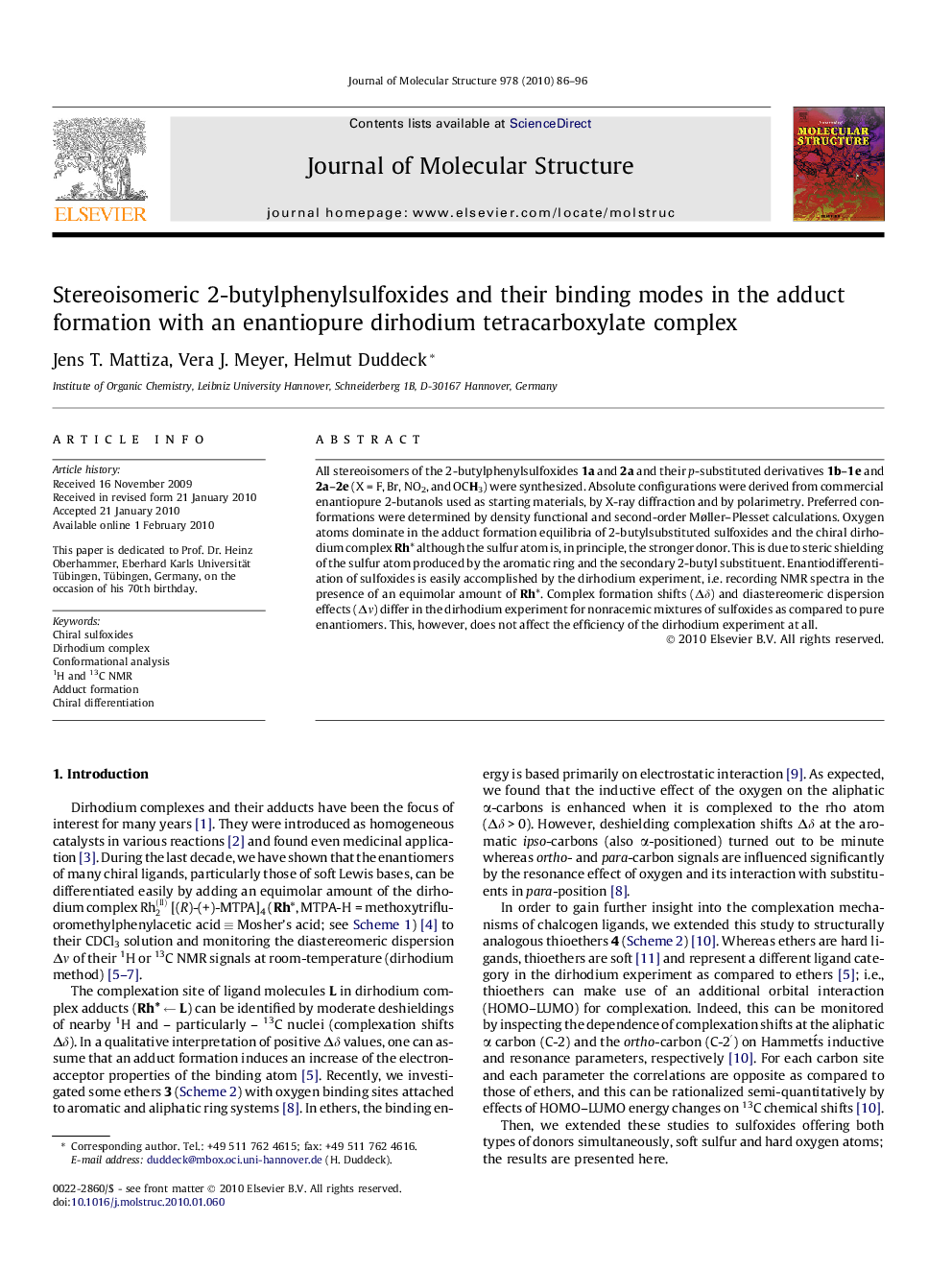| Article ID | Journal | Published Year | Pages | File Type |
|---|---|---|---|---|
| 1409838 | Journal of Molecular Structure | 2010 | 11 Pages |
Abstract
All stereoisomers of the 2-butylphenylsulfoxides 1a and 2a and their p-substituted derivatives 1b-1e and 2a-2e (X = F, Br, NO2, and OCH3) were synthesized. Absolute configurations were derived from commercial enantiopure 2-butanols used as starting materials, by X-ray diffraction and by polarimetry. Preferred conformations were determined by density functional and second-order Møller-Plesset calculations. Oxygen atoms dominate in the adduct formation equilibria of 2-butylsubstituted sulfoxides and the chiral dirhodium complex Rhâ although the sulfur atom is, in principle, the stronger donor. This is due to steric shielding of the sulfur atom produced by the aromatic ring and the secondary 2-butyl substituent. Enantiodifferentiation of sulfoxides is easily accomplished by the dirhodium experiment, i.e. recording NMR spectra in the presence of an equimolar amount of Rhâ. Complex formation shifts (Îδ) and diastereomeric dispersion effects (Îν) differ in the dirhodium experiment for nonracemic mixtures of sulfoxides as compared to pure enantiomers. This, however, does not affect the efficiency of the dirhodium experiment at all.
Related Topics
Physical Sciences and Engineering
Chemistry
Organic Chemistry
Authors
Jens T. Mattiza, Vera J. Meyer, Helmut Duddeck,
